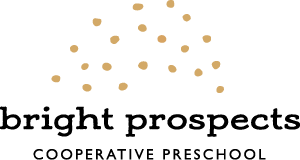A Bright Program
Throughout our school day, we strive to create real-life experiences for the child: the opportunity for conflict and conflict resolution, independent social interaction, child-centered exploration of their environment and imaginative play, verbal self-expression, the chance to exert independence in daily activities, and the opportunity to make and learn from mistakes and to overcome challenges. We weave these experiences into our daily activities and curriculum to help every child grow and flourish.
Typical Schedule
8:45-9am: Drop-off
9-9:30am: Large gross motor free play (outside or gym)
9:30-9:50am: Circle time, show and tell
10:00-10:20am: Snack time
10:20-11:25am: Area time, art
11:25-11:45am: Group time
11:45-12:00pm: Clean up and get ready to go
12:00pm: Pick-up
Extended Day Schedule includes lunch (brought by student), quiet time, STEM circle, and outside free play
Unstructured Play
Unstructured outdoor time offers one of the best opportunities for social interaction and growth. On the playground, children are able to interact with one another and negotiate the social structure on their own terms. They introduce themselves to one another, ask to play, or invite others to join them. With minimal adult intervention, the children work out what games they will play and how they will play them. They offer ideas to each other and compromise, or choose to play on their own. They also experience conflict—whose ideas will they choose, who gets to play with the shovel first, when will it be their turn. On the playground, we, as teachers, intentionally have minimal interaction with the children. We observe them and step in only when it becomes clear they don’t have the words or processes yet to negotiate the social landscape. When we do step in, it is to offer them the tools they need to successfully navigate these challenges. By giving them the language to assert their needs or feelings and encouraging the children to use these words and face these problems independently, their successes become theirs alone. This helps build confidence and becomes a powerful lesson (much more than if an adult were to intervene and take over): They did it and they can do it again.
Group Time
Group Time is split into two sections. The first section includes time for math (we count the first hundred days) and prediction skills (what’s the weather outside?). The second section is devoted to gross motor, singing, or skill-building games. This includes dance, treasure hunting and sorting objects by color, shape, and size. Sometimes we focus on science and what happens to our projects. Group Time allows children to work on following multiple-step directions in a group setting.
Circle Time
Circle Time is very structured and formal. Children work on listening skills, attention span, and how to interact with others. This means sitting and waiting for your turn, raising your hand before speaking, and listening quietly when others are talking. Circle Time offers an opportunity to introduce literacy and math concepts through songs, books, and the calendar. Science concepts are introduced, corresponding to our theme. Teachers maintain students' excitement about learning through activities including art, yoga, music, singing, stories, and puppetry. The curriculum covers topics such as outer space, transportation, ocean lift, and fairy tales.
Show-and-Tell
Show-and-Tell eventually gets introduced into Circle Time. Children are given a chance to explore public speaking and verbal skills as they share about the item they’ve brought in. It’s also a chance to learn how to wait their turn as they listen to their classmates share.
Art Projects
Art is done in a variety of forms. Sometimes it is child-directed (painting easel, play-dough table and art projects). Other times it is exploratory - a chance to use their imagination and creativity as well as push their development. Art focuses on fine-motor skills, following two and three-step directions, focus, and independent choices. We also offer both “no-thank-you” and “yes-please” projects. “No-thank-you” projects don’t include any specific skill/s, so children have the chance to choose whether or not to participate. “Yes-please” projects are ones where we do have specific goals or skills we want the children to practice. These are the projects we intentionally plan to target the students’ zones of proximal development so that they can push themselves and work on those difficult skills.


